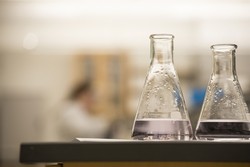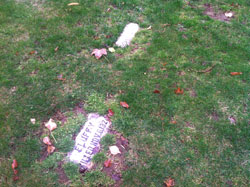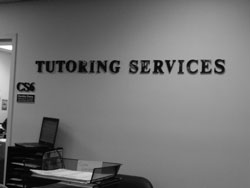Amid the COVID-19 pandemic, labs and clinicals for science, nursing, and health studies students are looking a bit different this semester with social distancing regulations in place. The movement to remote classes last March had shut down all in-person classes and research labs. However, they were able to resume in person this semester, and will continue after Thanksgiving break when all other classes will move online.
Steven Bachrach Ph.D., Dean of the School of Science and Professor of Chemistry, said that faculty developed a variety of different methods for science courses over the summer to prepare for the fall semester.
He said, “Some labs are completely remote, using a variety of different digital tools. Some labs are meeting in person every other week, with students engaged in a digital lab during the off week. Some labs are running with little change in their operations, other than the COVID-19 prevention measures (masks, social distancing, reduced occupancy). We even have a lab meeting outdoors.”
Senior biology student Brittany Sawyer said, “Labs are very different now since the pandemic began. My professors have been very careful with maintaining social distancing by having half of us come in on one day and then the other half on another day. We also are split into different groups so there aren’t as many people using the same instruments at one time. Our work stations are much more spaced now instead of working right next to someone like we did before.”
This hybrid format, in which half the students conduct in-person labs at a time while the others work at home, is popular among science courses this semester since labs can only hold eight students when socially distanced. However, according to Dorothy Lobo Ph.D., Associate Professor and Chair of the Biology Department, this method brings along some challenges.
“This [hybrid] format requires twice as much planning and coordination for the faculty who teach the labs. It has been a lot of work,” she said. For example, the department has prepared boxes of lab equipment for students to pick up so that they can work from home.
Some professors are also utilizing the virtual program Labster to conduct online labs, a “significant investment” according to Lobo, which allows students to attain valuable lab accessibility from home.
Lobo said that online work generally requires students to be more proactive in organizing their schedule in order to manage the workload. However, she also noted that there are advantages to online work. With her senior-level biology course offering asynchronous lectures, students are able to fit the course into their schedules, keep up with the material if they have to quarantine, and re-watch the more difficult assignments at their own pace.
The method of delivery depends on the type of class being offered, according to William Schreiber Ph.D., Lecturer and Chair of the Chemistry Department. He said that organic chemistry and general chemistry courses are using a mix of in-person and virtual labs, analytical chemistry courses are being conducted with as much in-person lab work as possible, and physics courses are being conducted virtually.
Senior biology student Jesse Bragger said, “I was very happy that labs were open again because I believe they are so vital at transforming the future of research and medicine so poignant to the pandemic at hand. My lab professor split up my class in half and uses audio visual software including Zoom to allow both classes to hear what he is saying and see what he is writing on the boards from home. We even have our own whiteboards and markers distributed by our professor so that we do not share any equipment.”
Some science classes have begun to focus particularly on COVID-19. Bragger said, “The genetics lab is currently focused around COVID-19 and we are coming up with ways to treat COVID-19 using miRNA therapies, which is super cool.” By utilizing miRNA therapies in the genetics lab, students like Bragger can learn about a new target approach to creating a treatment for COVID-19.
Even with regulations in place, professors believe that students can still receive a proper hands-on education this semester.
“The mix of different lab delivery modes has meant that students are getting hands-on experience where truly essential, and the quality of the virtual labs is top notch,” said Bachrach. “That being said, I know that all of our faculty will welcome the return to a normal lab class when it becomes safe to do so.”
Schreiber said, “Hands-on laboratory instruction is critically important for scientists-in-training. We are providing as much of that as we can this semester, based on available laboratory space and physical distancing requirements. By manipulation of class schedules we are planning to increase this critical aspect of science education during the spring semester.”
“It has certainly been a challenge to create appropriate lab experiments, both in-person ad virtual, that are safe and enriching,” continued Bachrach. “It has also been difficult to have to adapt to changes in the campus environment…I am very proud of what our faculty have done this semester in creating a meaningful lab experience under very difficult conditions.”
“The Department really values giving the students a quality experience and we have been doing our best to support each other,” Lobo added.
PHOTO COURTESY of Monmouth University




